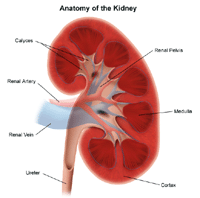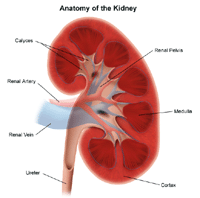Jaw Cancer
What You Need to Know
- Jaw cancer may start in the jawbone or be caused by soft-tissue cancers that grow into the jaw.
- Tobacco and heavy alcohol use are the biggest risk factors for developing jaw cancer.
- Jaw cancer is usually treated with surgery. Patients may need reconstruction with surgery or a prosthesis to restore form and function to the jaw.
What is jaw cancer?
Jaw cancer (cancer of the mandible and maxilla) is also known as oral cavity cancer. Jaw cancer can begin in the teeth or bones, including the mandible (lower jawbone) or maxilla (upper jawbone). In other cases, it begins in the soft tissues of the mouth, such as the gums, tongue or throat. As the cancer spreads, it can grow into the bone.
What causes jaw cancer?
Sometimes, jaw cancer occurs without a known cause. But some factors significantly increase the risk of jaw cancer, including:
- Tobacco use
- Excessive alcohol use
- Betel nut chewing (betel nuts, the fruit of the areca palm, are chewed in many parts of Asia and the Asia-Pacific region for their stimulant properties)
- Human papillomavirus (HPV) infection
Tobacco use is the single biggest cause of jaw cancer. People who both smoke and drink heavily are at the greatest risk for the disease.
Types of Jaw Cancer
Several types of cancer can originate in or near the jaw.
Oral Cavity Squamous Cell Carcinoma
Squamous cell carcinoma is by far the most common cause of oral cancers. Squamous cell carcinoma of the jaw can develop on tissue in and around the mouth, including the lips, gums, soft palate or throat. Untreated, it can spread into the jawbone.
Ameloblastic Carcinoma
This is a rare type of tumor that forms from tooth enamel. Sometimes, people develop benign (noncancerous) ameloblastic tumors that turn cancerous over time. Ameloblastic carcinoma can also develop on its own, in people with no history of the benign growths.
Osteosarcomas and Other Sarcomas
Sarcomas of the head and neck are rare tumors that affect connective tissue, including fat, nerves, bone, skin and muscle. Osteosarcoma develops in bone tissue, and osteosarcoma of the jaw can arise in the mandible or the maxilla. Soft-tissue sarcomas can also develop in the oral cavity. Only about 1% of head and neck cancers are sarcomas.
Odontogenic Carcinomas (Clear Cell and Ghost Cell)
Odontogenic carcinomas are extremely rare tumors that develop from tooth tissue. Clear cell odontogenic carcinomas are most often found in the mandible, while ghost cell odontogenic carcinomas are more common in the maxilla.
Metastatic Disease
Cancers that develop in other parts of the body can metastasize, or spread, to the bones. Sometimes, these cancers affect the bones of the jaw.
Symptoms of Jaw Cancer
The signs of jaw cancer vary depending on the type of tumor and whether it arises in the bone or the soft tissue. Symptoms might include:
- Lumps or sores in the mouth
- Areas of the mouth or gums that look white, red, raised or patchy
- Unusual bleeding in the mouth
- Pain or difficulty eating or swallowing
- Loose teeth or poor-fitting dentures
- Ear pain and fullness (a feeling of pressure or stuffiness), especially in only one ear.
- Toothache
- Sore throat
- Bad breath
How is jaw cancer diagnosed?
Dentists may see symptoms of oral cavity cancers during an exam or in dental X-rays, and they are often the first health-care practitioners to spot the cancers. If you or your dental practitioner notice symptoms that don’t go away within three or four weeks, follow up with your medical doctor. Evaluations for oral cavity cancers are often performed by specialists such as head and neck surgeons or otolaryngologists (ear, nose and throat doctors — ENTs).
To diagnose jaw cancer, doctors may use tests including the following.
- Physical exam: The doctor examines the gums, tongue and neck, discusses the patient’s health history and asks about risk factors such as smoking and tobacco use.
- Biopsy: During a biopsy, a needle or scalpel is used to remove a small amount of tissue from suspicious areas of the mouth or jaw. A pathologist examines the cells under a microscope to look for signs of cancer.
- Lymph node biopsy: A lymph node biopsy can be done with a needle for further initial evaluation. (Jaw cancers can spread to nearby lymph nodes in the neck or chest.)
- Imaging: Tests such as X-rays, magnetic resonance imaging (MRI) scans and CT scans may be used to assess the cancer and determine whether and where cancerous cells have spread.
How is jaw cancer treated?
People with jaw cancer may be treated with one or more therapies, depending on the type of cancer and how advanced it is. Jaw cancer treatments may involve surgery, radiation therapy or chemotherapy.
Surgery
Surgical treatments for jaw cancer include the following.
- Tumor resection: Surgery to remove the affected soft tissues and areas of the bone is usually the primary treatment for jaw cancer. In some cases, people do not need additional treatments.
- Reconstructive surgery: After surgery to remove tumors of the jaw, many people require reconstructive surgery to restore the form and function of their face and jaw. Plastic and head and neck reconstructive surgeons may use bone grafts, skin grafts or advanced techniques such as free flap surgery (reconstructive microsurgery). In other cases, maxillofacial prosthetic devices can help restore facial form and function, as well as oral functions such as swallowing, speech and chewing.
Radiation Therapy
After surgery, radiation therapy may be used as a secondary treatment to destroy remaining cancer cells. Jaw cancer may be treated with external beam radiation or with brachytherapy, during which radioactive seeds or tubes are placed directly into the cancer site.
Chemotherapy
Chemotherapy is sometimes used after surgery to destroy remaining cancer cells. It may be used alone or in combination with radiation therapy. Less often, chemotherapy is given as a neoadjuvant treatment — a therapy used before surgery to shrink the tumor so it’s easier to remove.
What is the outlook for people with jaw cancer?
Jaw cancer surgery and reconstruction can require a significant recovery period, sometimes lasting several months. After surgery, patients may temporarily not be able to eat normally, and they might require a feeding tube to obtain nutrition.
Depending on the extent of the surgery, some patients also require a temporary tracheostomy tube while they heal. Tracheostomy is a procedure that creates an opening in the windpipe from outside the neck to help a person breathe.
Surgery for jaw cancer often results in the loss of teeth. Some patients opt to get permanent dental implants to replace missing teeth, though this can be expensive. Others require a full or partial denture to replace missing teeth.
Despite these challenges, most patients regain form and some amount of normal function, including the ability to swallow. About 68% of people with oral cancers, including jaw cancers, survive at least five years. For people diagnosed at early stages, survival rates are even better.
If jaw cancer recurs after treatment, it usually happens within the first several years. It’s important for patients to see their doctors regularly for checkups to look for signs that the cancer has returned.
Head and Neck Tumor Center
The treatment of head and neck tumors is complex. At Johns Hopkins, our care goes beyond addressing the tumor. Our multidisciplinary team of cancer specialists is dedicated to treating your tumor with your overall health and life goals in mind.






